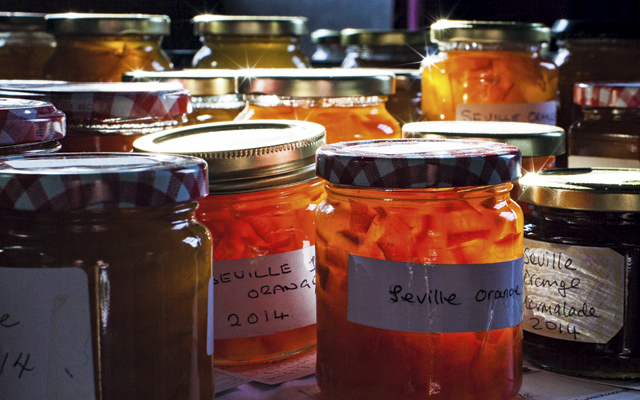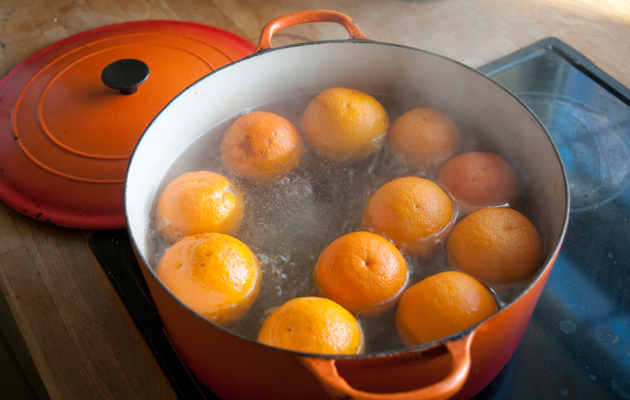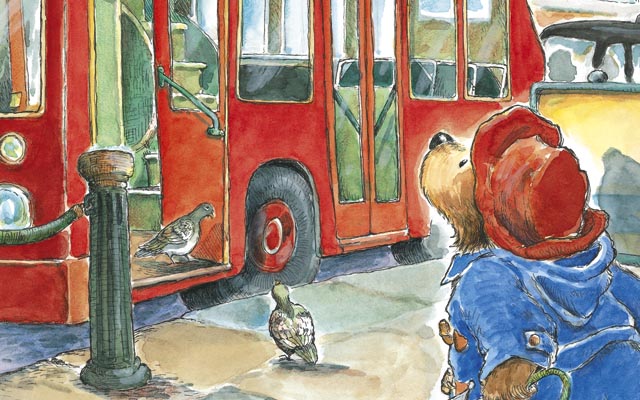20 fascinating facts about marmalade
We bring you 20 fascinating facts about the sticky breakfast favourite.


1. The first marmalades weren’t actually made from oranges at all the word ‘marmalade’ comes from the Portuguese marmelo, a type of quince paste.
2. These early ‘marmalades’ were flavoured with rose water and musk or ambergris and cut into squares, like Turkish delight. They were then packed into ornate round boxes, which were given as presents.
3. One of the earliest references to a ‘Marmelet of Oranges’ comes from a recipe book written by Eliza Cholmondeley in 1677.
4. A popular myth has it that marmalade was invented in about 1790 in Dundee as a way of dealing with a shipload of rotting oranges stranded by a storm.
5. The city of Dundee certainly gave its name to a type of marmalade (packed with thick chunks of rind), but is now home to only one company that produces it: Mackays.
6. Carlisle in Cumbria has always been a marmalade hotspot. In the 17th century, it was the site of one of the country’s great fruit markets.
7. Fortnum & Mason, which stocks London’s widest range of marmalades, originally sold it in tins, rather than jars. Today, it stocks kumquat, lemon-and-rose-petal and lime varieties, plus ‘Lucifer’s marmalade’, spiked with chilli.
Sign up for the Country Life Newsletter
Exquisite houses, the beauty of Nature, and how to get the most from your life, straight to your inbox.
8. To mark its 125th birthday in 2006, jam-makers F. Duerr & Son created the world’s most expensive jar of marmalade. Made with £3,450 worth of 62-year-old Dalmore whisky, £348 worth of vintage Pol Roger Champagne and £120 of edible gold (to make it sparkle in the sunlight), all poured into a £1,100 crystal container, it was priced at an eye-watering £5,000: the equivalent of £76 per slice of toast.
9. To celebrate 50 years since he stowed away in a lifeboat with a suitcase full of marmalade, Paddington Bear released My Book of Marmalade in 2008. Subtitled ‘A celebration of sticky paws’, it features recipes, trivia and musings on his favourite comestible.
10. Bitter, dimpled Seville oranges, with their high level of pectin, are the fruit of choice for marmalade making.
11. The mythical ‘golden apples’ in the garden of the Hesperides, which Hercules was tasked with picking as part of his labours, could actually have been Seville oranges they grow all over the Mediterranean.
12. The aromatic oil extracted from their thick peel is also used to flavour spirits, including blue curaçao, Cointreau and Grand Marnier.
13. The Holy Grail of homemade marmalade is an even distribution of peel. To achieve it, leave the marmalade to settle in the preserving point after it’s reached its setting point for 15 minutes, then pour into jars.
14. During the days of the Raj, Britons in India made ‘country marmalade’ from pomelos, thick-skinned relatives of the grapefruit.
15. English and Scottish migrants took marmalade to Canada with them, where it remains popular to this day. Americans, on the other hand, are nonplussed by it perhaps because sweet oranges, rather than Sevilles, are readily available.
16. When Capt Scott set off for the Antarctic in 1910, he stocked up on marmalade. Many years later, a solitary jar of it was found buried in the ice.
17. Sir Edmund Hillary took a jar up Everest in 1953.
18. In Ian Fleming’s 1957 novel From Russia, With Love, it’s revealed that James Bond has it on his toast in the mornings.
19. Frank Cooper, the famed maker of coarse-cut Oxford marmalade, is said to supply Buckingham Palace the company has a Royal Warrant from The Queen.
20. They say nothing rhymes with the word ‘orange’, but that isn’t strictly true. The 20-volume historical Oxford English Dictionary lists sporange, a little-used alternative form of sporangium—a botanical name for a part of a fern.
The 10th World’s Original Marmalade Awards, with workshops, Paddington readings, paddle-steamer sailings and wine-tastings, will take place at Dalemain, Penrith, Cumbria, on February 28–March 1. For tickets, telephone 01768 486450 or visit www.dalemainmarmaladeawards.co.uk

Perfect Seville orange marmalade recipe
Make the most of the Seville orange season by following our delicious Seville orange marmalade recipe.

Credit: R. W. Alley
Paddington Bear's London
We follow Paddington Bear's paw-prints round the capital and find out what's changed.
Country Life is unlike any other magazine: the only glossy weekly on the newsstand and the only magazine that has been guest-edited by HRH The King not once, but twice. It is a celebration of modern rural life and all its diverse joys and pleasures — that was first published in Queen Victoria's Diamond Jubilee year. Our eclectic mixture of witty and informative content — from the most up-to-date property news and commentary and a coveted glimpse inside some of the UK's best houses and gardens, to gardening, the arts and interior design, written by experts in their field — still cannot be found in print or online, anywhere else.
-
 Jungle temples, pet snakes and the most expensive car in the world: Country Life Quiz of the Day, April 14, 2025
Jungle temples, pet snakes and the most expensive car in the world: Country Life Quiz of the Day, April 14, 2025Mondays's quiz tests your knowledge on English kings, astronomy and fashion.
By James Fisher
-
 Welcome to the modern party barn, where disco balls are 'non-negotiable'
Welcome to the modern party barn, where disco balls are 'non-negotiable'A party barn is the ultimate good-time utopia, devoid of the toil of a home gym or the practicalities of a home office. Modern efforts are a world away from the draughty, hay-bales-and-a-hi-fi set-up of yesteryear.
By Annabel Dixon